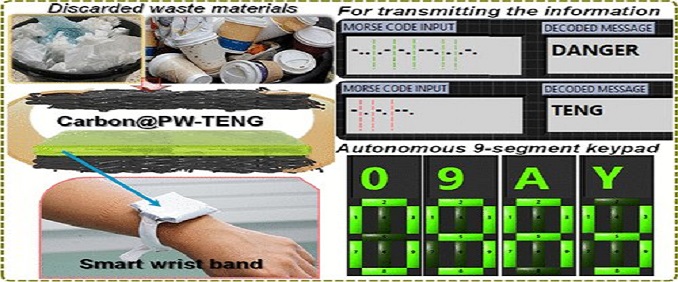Thanks to a novel energy-harvesting gadget created at the University of Surrey, wearable electronics might soon be entirely constructed of recycled waste materials and driven by human activity.
Scientists have developed a wrist gadget composed of used paper wipes and plastic cups that operates on energy gathered from the wearer’s motions. The prototype gadget can send Morse code, and the team is currently working on plans to incorporate this technology into smartwatches.
According to Dr. Bhaskar Dudem, project head and Research Fellow at the University of Surrey’s Advanced Technology Institute (ATI), it won’t be long before we have to ask ourselves which of our possessions isn’t connected to the internet.
However, the present internet-of-things (IoT) boom underlines the reality that our planet lacks the raw materials required to continue manufacturing these in-demand devices.
The research shows that there is a road to developing sustainable technology that operates on electricity generated by us, the technology’s users.
Surrey’s invention is “self-powered” because it is made of materials that become electrically charged when they come into touch with one another. These materials (also known as Triboelectric Nanogenerators (TENGs) capture energy from movement via a process known as electrostatic induction.
The creators believe their energy-harvesting wearable gadget might be a game-changer in the consumer, medical, and security sectors in the future.
According to Professor Ravi Silva, Director of the Advanced Technology Institute at the University of Surrey, the main aim of the Advanced Technology Institute is to help develop a society where clean energy is accessible to all.
“Our energy-harvesting technology exemplifies this critical purpose, and we stand ready to collaborate with industry to guarantee that this technology realizes its full potential.”

